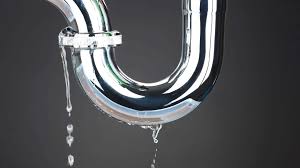Dealing with a leaking PVC fitting can be a frustrating experience, especially if you’re unsure how to address the issue. Whether it’s a small drip or a significant leak, understanding the causes and solutions is essential to prevent further damage. This guide will walk you through everything you need to know about fixing a leaking PVC fitting, from identifying the problem to implementing the right repair techniques.First, let’s explore the common causes of a leaking PVC fitting:
- Improper Installation: If the fitting wasn’t glued correctly or the pipe wasn’t fully inserted, leaks can occur.
- Wear and Tear: Over time, PVC fittings can degrade due to exposure to chemicals, UV rays, or extreme temperatures.
- Physical Damage: Accidental impacts or pressure changes can crack or loosen fittings.
- Poor Quality Materials: Low-grade PVC or incompatible adhesives may lead to leaks.
Now, let’s dive into the step-by-step process to fix a leaking PVC fitting:
- Turn Off the Water Supply: Before attempting any repairs, ensure the water supply is shut off to avoid further leakage or water damage.
- Drain the System: Open nearby faucets or valves to drain any remaining water from the pipes.
- Inspect the Leak: Identify the exact location and cause of the leak. Is it a crack, loose fitting, or failed adhesive?
- Clean the Area: Use a cloth or sandpaper to clean the leaking area and remove any debris or old adhesive.
- Apply PVC Primer and Cement: For small leaks, applying PVC primer and cement can reseal the joint. Follow the manufacturer’s instructions for best results.
- Replace the Fitting if Necessary: If the fitting is cracked or severely damaged, cut out the damaged section and replace it with a new fitting.
- Test the Repair: Turn the water supply back on and check for leaks. Monitor the area for a few hours to ensure the repair holds.
Preventing future leaks is just as important as fixing them. Here are some tips to avoid leaking PVC fittings:
- Use High-Quality Materials: Invest in reputable PVC fittings and adhesives to ensure longevity.
- Follow Installation Guidelines: Properly measure, cut, and glue fittings to create a secure connection.
- Protect from Environmental Factors: Shield PVC pipes from direct sunlight or extreme temperatures to prevent degradation.
- Regular Maintenance: Periodically inspect your plumbing system for signs of wear or potential leaks.
In some cases, a leaking PVC fitting may require professional assistance. If you’re unsure about the repair or the leak persists after your efforts, don’t hesitate to call a licensed plumber. They can provide expert advice and ensure the job is done correctly.Understanding how to address a leaking PVC fitting empowers you to tackle minor plumbing issues confidently. By following these steps and preventive measures, you can maintain a leak-free plumbing system and avoid costly repairs down the line.

